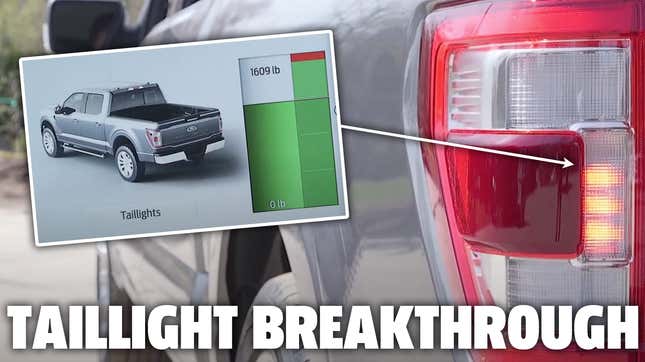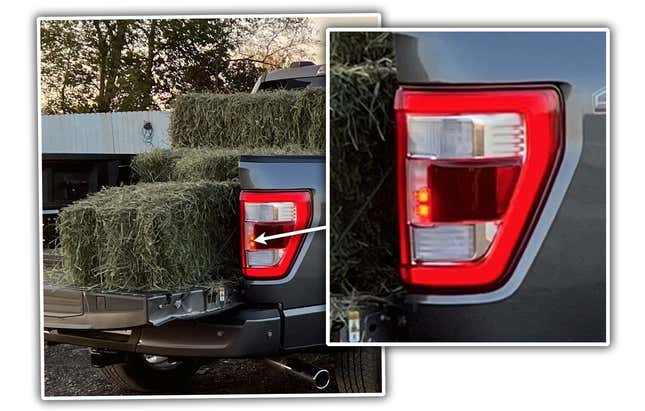
Was 2021 a great year? Not exactly! But we did have some posts that got a lot of attention. Take a walk down memory lane with us, as we think back on 2021, a year that will seem much better by this time in 2022.
Last night at the Ruby Glow, America’s ninth-best taillight enthusiast bar, I was trying to break up a fight between some hardcore Altezza punks and a group of belligerent smoked-lensers when out of nowhere, a ragged scream pierced through the chaos. A lone figure, an older woman, rose up from the pile of broken chairs and shattered taillight lenses. “New F-150 taillights do something no taillight has ever done before!” she yelled, lip quivering with emotion. At that moment, mankind’s inherent taillight curiosity overpowered base instincts of tribalism and violence, and all eyes turned to the old woman.
She pulled an overhead projector from her pants and set it on the bar. She turned it on, and on the cracked and stained drywall this image appeared:

She then began to explain what was going on in that image of an F-150 taillight, which I’ll paraphrase here. See those two glowing LEDs in the center of the taillight? There appears to be four total lights, with two on.
Here’s what those lights are indicating: weight. Yes, weight. Ford has a system they introduced earlier this year called Onboard Scales. It weighs how much is being loaded into the truck and then displays that as a little four-part graph in the taillights, based on the truck’s payload capacity, so you can see easily how much more you can load, right there by the back of the truck. No outside scales necessary.
Here’s how Ford describe it in its press release:
Smart taillamps operate like the battery charge indicator on a mobile phone, displaying the percentage of payload capacity by illuminating LEDs arranged in a built-in vertical bar. As the truck is loaded, all four lights illuminate, showing it’s fully loaded. If the truck is overloaded, the top lights blink. The maximum payload based on the pickup’s configuration is programmed into the system. Additionally, the truck can be set on scale mode, which zeroes out the current load and allows for approximate weighing of additional items loaded into the bed.
This is an extremely clever innovation, and it seems like it would be quite useful, but what excites me most about it is that it represents one of the first genuinely new roles for taillights since, most likely, the taillight’s use as an indicator of locked/unlocked status for remote control locking, which started in the 1990s.
The use of taillights for alarm/lock status marked a first major addition to taillights in decades, where they could perform a communication function outside of the usual contexts of indicating a driver’s actions or intended actions while the car was in motion.
When this came around, the global taillight community went into a tizzy of evaluation and re-assessment, resulting in the The Lansing Accords that formally codified taillight use as including the ability to communicate vehicle status to a limited audience (the owner) while stationary.
Ford’s repurposing of taillight components as a dynamic display device to indicate a non-driver behavior, non-vehicular status situation is unprecedented. In Ford’s case, the taillight is utilized to inform a targeted audience that may or may not be the vehicle’s owner of a condition completely unrelated to driving or the vehicle itself: the amount of mass in the bed.
I know there are those in the Taillight Community who are more purist-oriented than myself and feel taillights should not be debased in such a manner. I, on the other hand, am a taillight expansionist, and believe that if there’s something that can effectively be conveyed via the medium of the taillight for the betterment of humankind, then all efforts should be taken to do so.
I imagine a future where entire works of literature, performances, and art will be conveyed through the lens of a taillight. We’re not there just yet, but a truck that can let you know in 25 percent increments about how much payload capacity you have left is a step in that direction.
Good work, Ford taillight designers and engineers. I look forward to your presentation at the upcoming 2022 Global Rear Lighting Synod in Oslo. If another riot breaks out, I got your back.